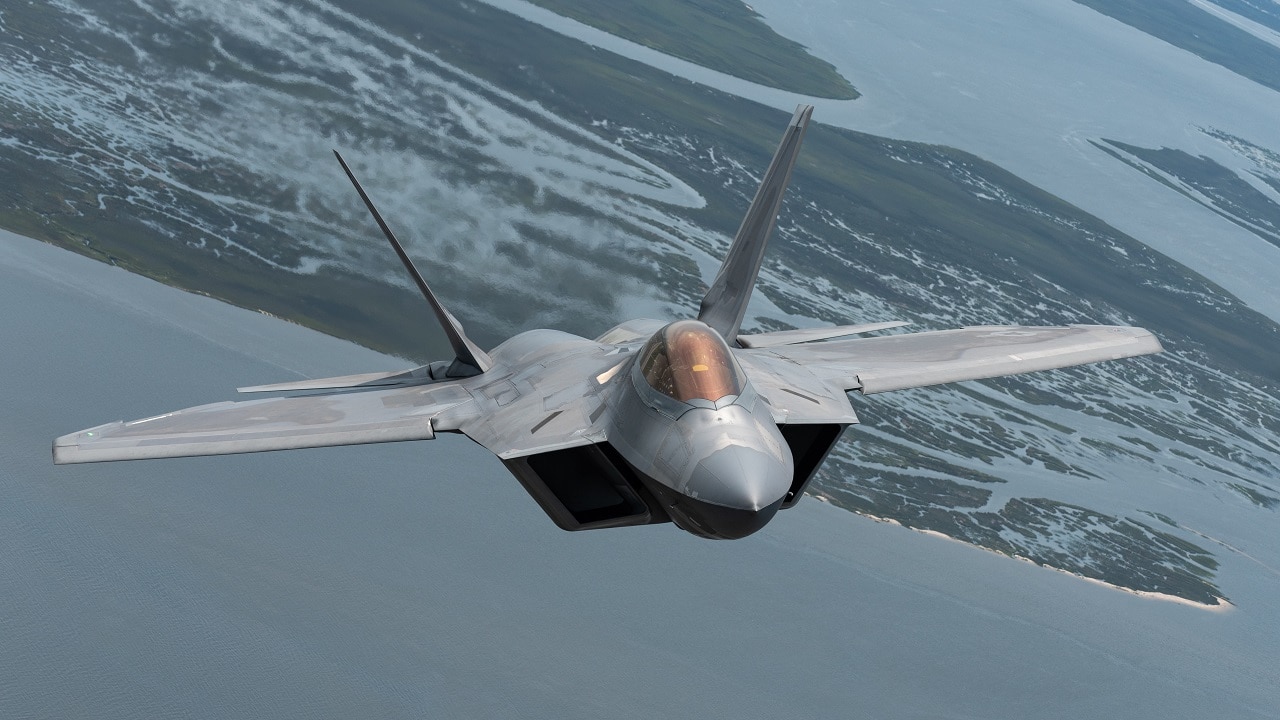Poland wants to guarantee a continued U.S. military presence in its country. The need is especially clear as Russia carries on its brutal campaign against Ukraine.
There is perhaps no better way to benefit from U.S. military power than to keep some of America’s best fighter planes flying out of Poland. F-35 Lightning IIs have been conducting NATO policing missions for the last three months. Now 12 U.S. Air Force F-22 Raptors will join the action. The Raptors are from the 90th Fighter Squadron at Joint Base Elmendorf-Richardson, and they will be patrolling from one of the most forward-deployed and hazardous areas in the world.
Fighters to Shield and Protect
NATO policing missions are conducted every day, around the clock, to keep the alliance’s skies safe. The operations they carry out are peaceful and defensive, but all pilots know the stakes are high when it comes to facing down Russia. The F-22s thus will have a pivotal and even dangerous job. Theirs is an aerial rapid-response mission to deal with any Russian airplanes that might sneak into Poland’s air defense identification zone.
The Raptors will be flying out of the 32nd Tactical Air Base in Łask, Poland to enhance shielding efforts for NATO. Gen. James Hecker, head of U.S. Air Forces in Europe-Air Forces Africa, said in a news release that securing the alliance’s eastern edge is part of a substantial mission to protect Poland and other alliance members.
“This F-22 deployment will add significant capabilities to our support of NATO’s collective defense,” Hecker said. “The Raptors’ ability to perform both air-to-air and air-to-ground missions will exponentially increase the warfighting capability along the eastern flank as this rotation supports NATO’s Air Shielding.”
How About an Army Headquarters?
This will not be the only American contingent in Poland. President Joe Biden announced at end of June that the U.S. Army will station a permanent presence in Poland, in the form of the headquarters of V Corps. The president added that there will be an army brigade in Romania, as well as more troops rotating in the Baltics and F-35s deployed to the United Kingdom.
I worked in the U.S. Senate on a project in 2018 for a permanent U.S. base in Poland known as Fort Trump. The Polish military was enthusiastic to host American troops who would be stationed at a newly constructed base. At least 10 Polish officers came into our Senate office – it was standing-room only. The group advocated for U.S. Army tanks and infantry fighting vehicles to keep Russia from invading Poland. While Fort Trump didn’t really work out during that administration, Biden compromised and sent the V Corps headquarters instead.
More U.S. Military Heft in Poland
The United States has also sent 1,700 additional troops to Poland, bringing its total forces in the country to around 10,000, according to the Notes From Poland web site. Two Patriot missile defenders and an assortment of U.S. F-16s round out the American contribution to Poland’s defense.
There is good reason for such a strong U.S. presence. Poland is key to NATO’s eastern flank, and the U.S. military is making a critical and strategic decision to keep a permanent presence in the country. There is strength in numbers when it comes to standing up to Russia, and NATO has not seen deployments like these since the Cold War. This has to frustrate Putin – the Russian president has long accused the alliance of encroaching on Moscow’s sovereignty. The strength of the U.S. presence in Poland will continue to stick in his craw.
Now serving as 1945’s Defense and National Security Editor, Brent M. Eastwood, PhD, is the author of Humans, Machines, and Data: Future Trends in Warfare. He is an Emerging Threats expert and former U.S. Army Infantry officer. You can follow him on Twitter @BMEastwood.

